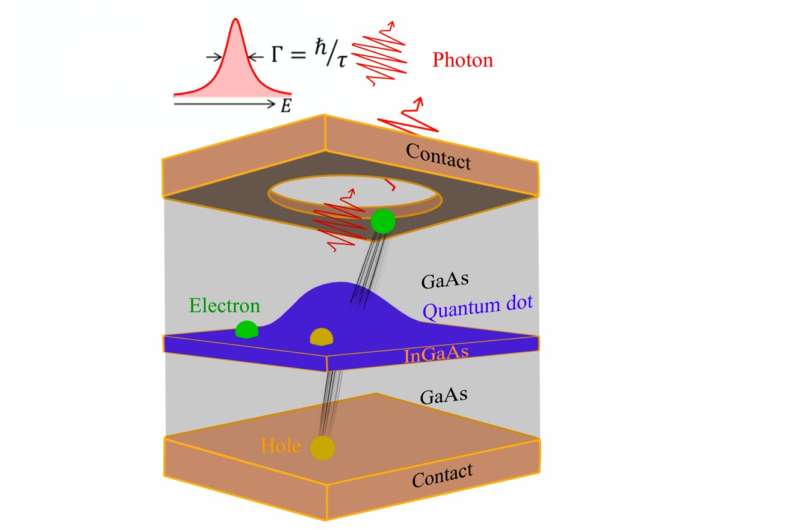Nanostructure-based lasers for information and communication technologies

The internet of things (IoT) enables the interconnection and data transmission among a plethora of physical objects such as terminal devices, vehicles, and buildings that are embedded with electronics, software, sensors, actuators, and network connectivity. In 5G and 6G optical networks, high-speed and low-latency communications enable interconnection among a wide variety of endpoints through the IoT. Furthermore, quantum technologies are on the way to reshape the future of internet by providing considerably faster and largely more secure data transmission owing to new encryption protocols based on quantum laws. The rule of thumb of such key applications is that they all require the utilization of laser sources to perform complex tasks at ultra-fast speed and to enable broadband, secure and energy efficient communications.
To achieve these goals, semiconductor nanostructures with low dimensionality like quantum dots and quantum dashes are one of the best attractive and heuristic solutions for achieving high performance lasers. In a new paper published in Light Science & Application, a team of scientists, led by Professor Frédéric Grillot from Télécom Paris, Institut Polytechnique de Paris, France, and co-workers have reviewed their recent findings on nanostructured lasers utilizing an active region made with quantum dot and quantum dash nanostructures. The study demonstrates the importance of using nanostructure based light emitters and highlights the impact these photonic devices have on industry and society. The importance of this work is performed owing to strong worldwide academic collaborators all experts in quantum dot technology.
"We highlight the potential of both quantum dot and quantum dash lasers for low noise operation because they feature a low population inversion factor and reduced amplified spontaneous emission noise as well as low linewidth enhancement factor. Lasers with narrow linewidth and low relative intensity noise are needed for coherent communication, optical atomic clocks, frequency synthesis, high-resolution spectroscopy and distributed sensing systems."
"Due to the tight level of integration of multiple optoelectronics components on a photonic chip, heterogeneously integrated hybrid semiconductor lasers on silicon are more reflection sensitive. We have proved the excellent stability against optical feedback of the epitaxial quantum dot lasers, which is the greatest achievement ever for pushing the development of isolation free transmissions on silicon chips" they added.
"Another peculiar feature of quantum dots results from their large optical nonlinearities with fast response speed. Using a single section of quantum dot lasers directly grown on silicon, it is possible to achieve sufficient four-wave mixing conversion efficiency to demonstrate self-mode-locking with sub-picosecond pulse duration and kHz frequency-comb linewidth."
"Future perspective can consider deploying quantum dots in quantum technologies like for coherent and squeezing states of light. In particular, squeezing states can be used to replace shot-noise-limited laser sources whereby ultralow noise oscillator operating below the standard quantum limit is highly meaningful in metrology, spectroscopy and for any precision measurements. Besides, in quantum key distribution relying on entangled photons, a large squeezing bandwidth is desirable for achieving high-speed data transmissions" the scientists forecast.
"Based on the results reported in this article, scientists, researchers, and engineers can come up with an informed judgment in utilizing self-assembled nanostructures for applications ranging from silicon-based integrated technologies to quantum information systems."
More information: Frédéric Grillot et al, Uncovering recent progress in nanostructured light-emitters for information and communication technologies, Light: Science & Applications (2021). DOI: 10.1038/s41377-021-00598-3
Journal information: Light: Science & Applications
Provided by Chinese Academy of Sciences



















